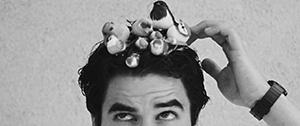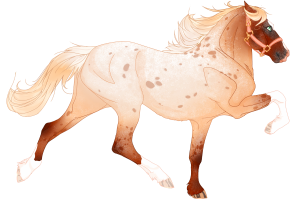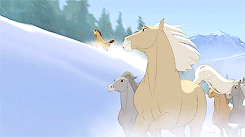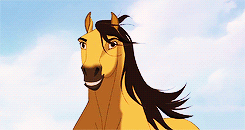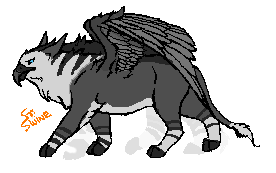The third tolter of my 'horse breeds' theme!
This guy has been sitting in my drafts for quite a while. They've been ready to post,
I just haven't really had the time and/or motivation to post 'em.
As many of you probably have alreay guessed - this is the "Clydesdale".
Here comes the facts!
Energetic - Strong - Active

This guy has been sitting in my drafts for quite a while. They've been ready to post,
I just haven't really had the time and/or motivation to post 'em.
As many of you probably have alreay guessed - this is the "Clydesdale".
Here comes the facts!
Energetic - Strong - Active

The descendants of the Clydesdale are farm
horses from Clydesdale, Scotland. It was
originally a quite small draught horse but today
it is a fairly tall breed. They are known for their
classic appearance of a bay colour with high
white stockings and a broad blaze. Their gait is
active with a general impression of power and
quality. The Clydesdale was originally used for
agriculture and haulage and still today is it used
for draught purposes.
The first recorded use of the name "Clydesdale"
for the breed was in 1826. The first breed
registry was formed in 1877. In the late 19th
and early 20th century thousands of Clydesdales
were exported to different parts of the world,
including Australia and New Zealand. During
World War I the population numbers began
to drop and by the 1970's the Rare Breeds
Survival Trust considered the breed
vulnerable to extinction. Since then the
numbers have increased slightly again
but they are still thought to be vulnerable.Short facts!
Country of Origin: Scotland
Coat Colors: Most commonly bay however black,
chestnut and roan may occur.
Markings: Sabino.
Distinguishing features: Draft-type, generally bay with
sabino-like characteristics and feathering.
Height: 16hh - 18hh (64 - 72 inches, 163 - 183 cm)
Fun fact: "The conformation of the Clydesdale has
changed greatly throughout its history. In the 1920s and 1930s,
it was a compact horse smaller than the Shire, Percheron,
and Belgian."If you want to learn more,
check out these sources!
https://en.wikipedia.org/wiki/Clydesdale_horse
http://www.ansi.okstate.edu/breeds/horses/clydesdale/
http://www.clydesdalehorsesociety.com/breed-history.html
- To have a chance at this tolter I want you to tell me about their companion. This can be told via art, writing, poetry, comics - you name it. You choose how you want to tell me about them, and what you want to tell. It can be about their relationship, how they met, their favorite thing to do, a memory of theirs etc.
- Code: Select all
Username:
Name:
Gender:
Companion: (You choose what you want here - art, writing etc - and what it will tell!)
I want realistic companions. This means animals, (yes, I don't want any humans), that could actually appear on a farm in real life and would get along with a horse.
Good examples of companions: bunny, wild horse, deer, alpaca, hedgehog, bird, snake, CS species that's alike any of the "acceptable" companions.
Bad examples of companions: lion, bear, dragon, really odd CS species.
You may use other tolters or other CS species as long as that specific species would be a somewhat realistic companion.
If you're really unsure whether the companion you have in mind is acceptable or not, just send me a PM and I'll get back to you asap! c:
You may not pretty up your form.
You're only allowed 1 art piece (1 comic page counts as 1 art piece).
Writing limit is 3 pharagraphs.

Username:
Name:
Gender:
Eye Color: Green
Dam: Unknown
Sire: Unknown
Genes: Ee/Aa/nSb
Edits & breeding notes:
Mane & tail edit.
Leg feathering.
Convex nose.
Thicker neck & shoulders.
-
Mane & tail edit may pass to two foals.
Leg feathering may pass to two foals.
Convex nose may pass to two foals.
If a foal inherits more than one edit it still counts on all edits.
For example: If they get a foal with both a convex nose and leg feathering
these two edits can only be inherited once more, either on the same foal
or on separate ones.
These edits will not pass past 2nd generation.






